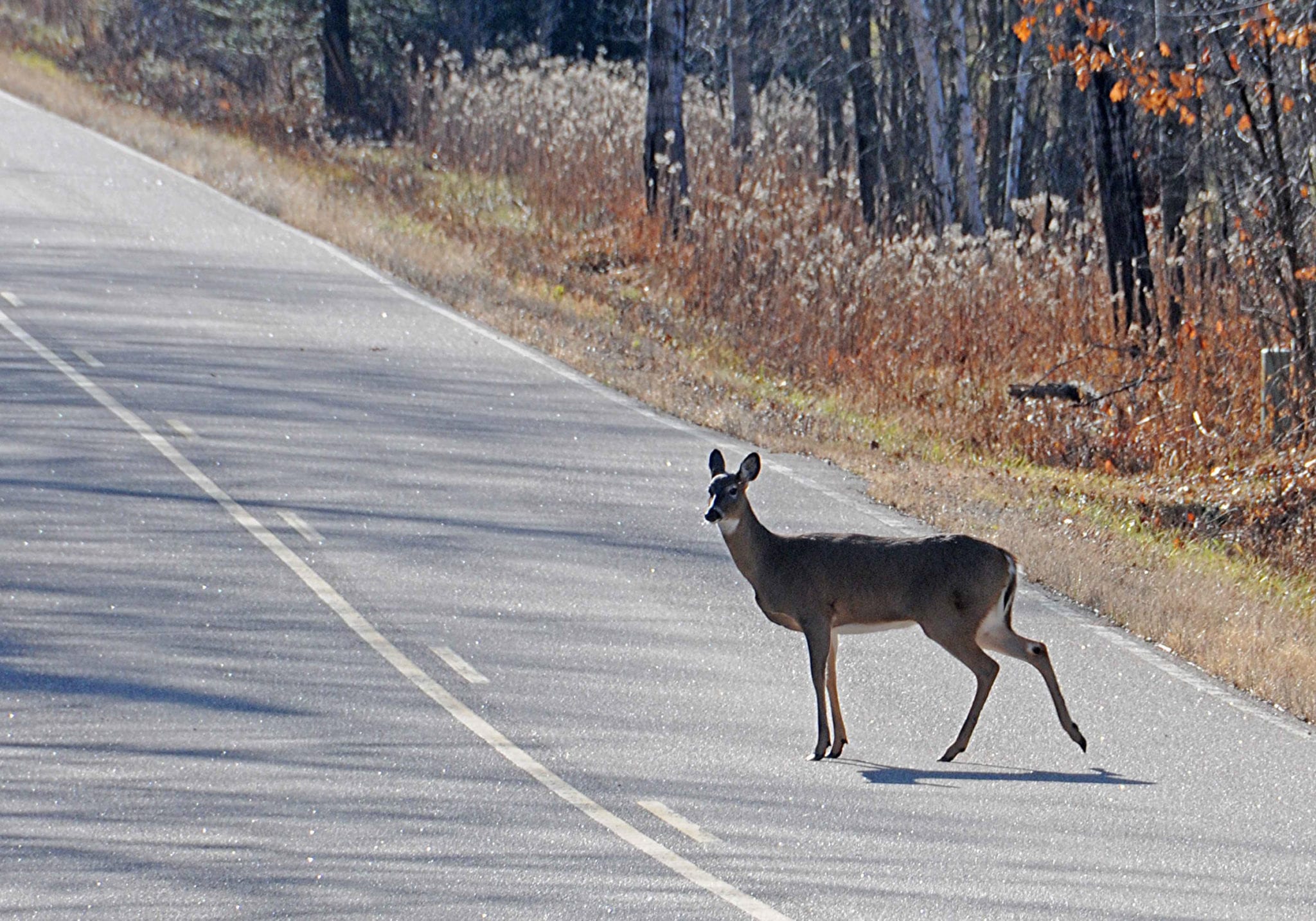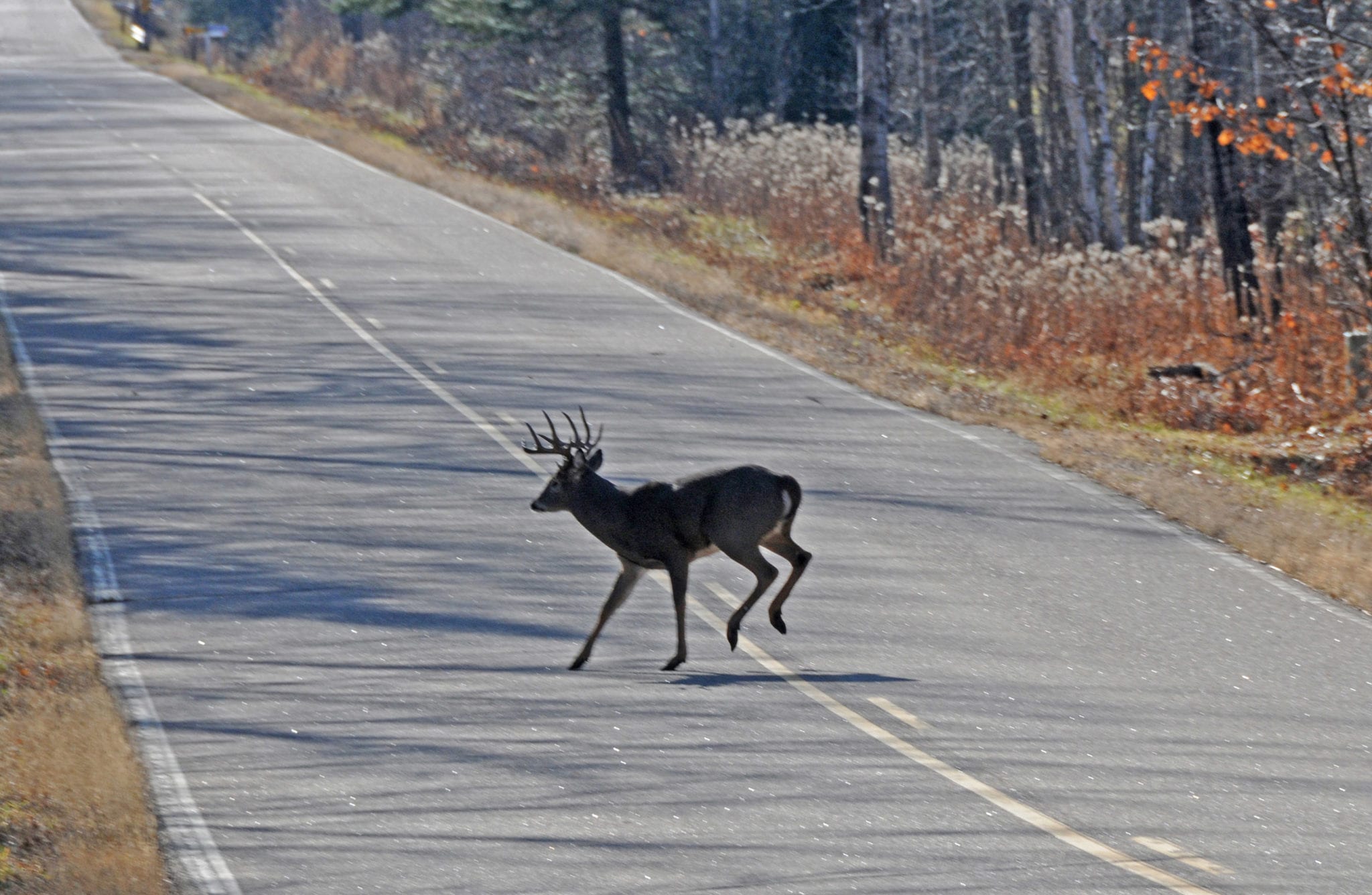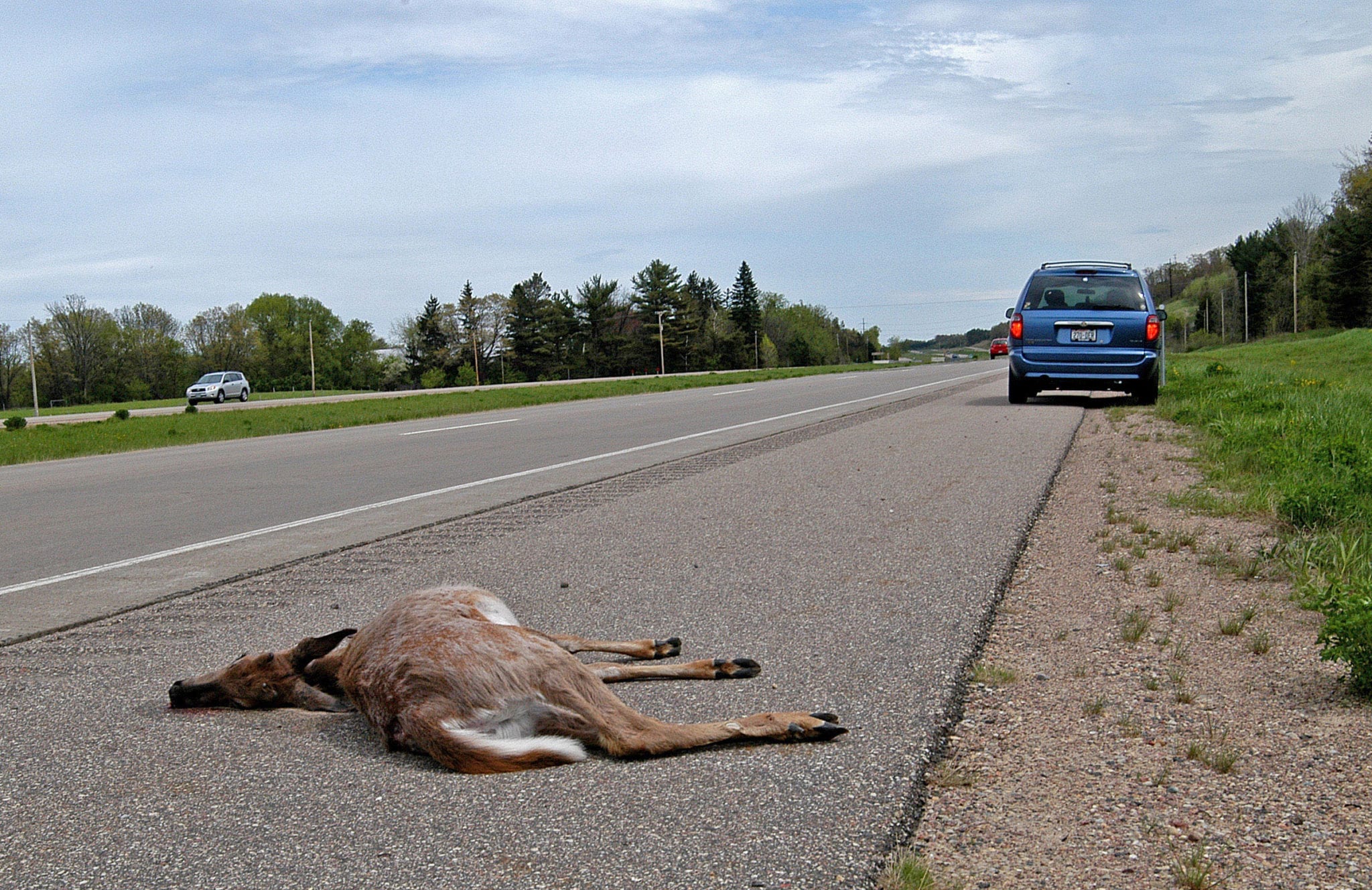Here’s a news item much of the United States expects each autumn with the certainty of death, taxes and morning breath: Deer-vehicle collisions peak during the whitetail’s breeding season from late October to December.
And here’s the predictable impact of those annual warnings on deer-vehicle collisions: Zero. Unfortunately, “educating the public” with roadside warning signs, and helpful tips like staying vigilant, forgoing cruise-control, and slowing down between dusk and dawn do little or nothing to reduce deer-vehicle accidents.
A 149-page report from a 2006 study in Kansas, for instance, offered this summary: “There is little or no relationship between deer warning signs and crash rates. … Static deer warning signs as they have been used in Kansas are not effective for mitigating deer-vehicle crashes.”
Previous research persuaded Minnesota to announce in 2005 that it would cease installing deer-warning signs, and remove existing signs as they wear out.
The simple fact is that wildlife can’t be trained to safely cross roads, and Lord knows it’s not because cars, trucks and motorcycles are new to the landscape. In Wisconsin, for example, its first recorded deer-vehicle collisions occurred in 1937 when conservation wardens salvaged 192 auto-killed deer.
Therefore, the more deer you have, and the more actively they seek or avoid sexual liaisons each autumn, the more likely they’ll run, walk or leap in front of your vehicle or into its side.
In fact, recent statistics from the State Farm Mutual Automobile Insurance Co. show the likelihood of collisions with deer more than doubles from October through December, as the deer’s breeding season ebbs and flows across the nation. The average cost of deer-related collision claims for 2015-16 was $3,995.08 nationwide, according to State Farm, down slightly from $4,135 the previous year.

A doe crosses a county highway in northcentral Wisconsin while being followed by a rutting buck.
So, yes, by all means keep scanning roadsides for deer while driving, but if one suddenly appears, tighten your grip on the steering wheel, apply your brakes and don’t swerve. It also helps to use your high beams when possible, and to slow down while blowing your horn when spotting deer.
Further, expect them to try that time-tested ploy of sending one deer ahead to distract you, and then sneaking in another one, two or three from your flank.
But don’t waste your money on bumper-mounted deer whistles, or rely on roadside light reflectors. No scientific research has found evidence that deer whistles emit any sounds deer can hear, let alone respond to safely and predictably. The same goes for roadside reflectors, which folks once hoped would warn deer of approaching danger by reflecting headlights to and fro. In various studies, deer either ignored the reflected lights or responded so randomly that they fled toward danger as often as they avoided it.

This buck followed a doe across a county highway in northcentral Wisconsin at midmorning in November 2009.
About the only things that reduce accidents are lower deer numbers, and extensive roadside fencing and wildlife overpasses/underpasses. Sweden, for example, maintains high fences along most major highways to reduce collisions with moose and deer to save motorists’ lives.
But fences get expensive, and it seems we’d rather spend our energy and resources paying high insurance premiums and deductibles. We’re also good at spreading goofy conspiracy theories that claim insurance companies lobby politicians and wildlife agencies to slash deer herds.
Out of curiosity, I interviewed three state wildlife directors at an annual workshop two years ago to see if any of them had ever been lobbied by insurance companies to reduce deer-vehicle collisions. None of these current or former directors – Matt Knox, Virginia; Mike Tonkovich, Ohio; and Jon Gassett, Kentucky – recalled hearing from an insurer on any topic.
Likewise, Cathy Stepp, secretary of the Wisconsin Department of Natural Resources, says she has never had anyone from the insurance industry discuss deer-vehicle accidents with her. That also includes her time as a state senator (2002-2006) and as a member of the Natural Resources Board (1998-2001).
Stepp said she recalls insurance-related discussions during her Senate days, but only regarding health-care costs, mandatory coverage minimums, and whether leftover medications should be donated.
“I think some people have this vision that the insurance sector has a much bigger role in day-to-day policy than they do in reality,” Stepp said in a June 2014 interview.

A dead doe lies alongside a highway after getting hit by a minivan.
That lack of input from the insurance industry shouldn’t surprise anyone who thinks about it. After all, insurance companies don’t lose money on risks they can easily analyze and predict. And if anything generates tons of data and predictable information, it’s deer-vehicle collisions. These accidents can be broken down by state, county, township, driver’s age, driver’s sex, injury rates, repair costs, time of day, and day of week and month, to name a few.
Sure, all that paperwork is time-consuming for insurance agents, but their employers aren’t losing money on deer-vehicle collisions. To see how insurers stay in the black, simply move from a county with few deer-vehicle accidents to one with many such accidents.
It’s simple: If you increase your risks, insurance companies increase your rates. And if you cost them money by hitting too many deer in a given time, they dump you.
Even so, much like voter fraud and rigged elections, many folks will continue believing the great insurance-company conspiracy rather than conceding their only evidence is previous conspiracy theories.
If so, check their front bumpers for deer whistles. They probably believe in those, too.
Deer-Vehicle Accidents
States with highest odds for striking a deer, elk or moose, according to State Farm Mutual Automobile Insurance Co.
Rank State 2015-16 Odds
1) West Virginia 1 in 41
2) Montana 1 in 58
3) Pennsylvania 1 in 67
4) Iowa 1 in 68
5) South Dakota 1 in 70
6) Wisconsin 1 in 77
7) Minnesota 1 in 80
8) Michigan 1 in 85
9) Wyoming 1 in 85
10) Mississippi 1 in 87
States with lowest odds for striking a deer, elk or moose, according to State Farm Mutual Automobile Insurance Co.
Rank State 2015-16 Odds
46) Massachusetts 1 in 635
47) Florida 1 in 903
48) California 1 in 1,064
49) Arizona 1 in 1,175
50) Hawaii 1 in 18,955

 By
By 



